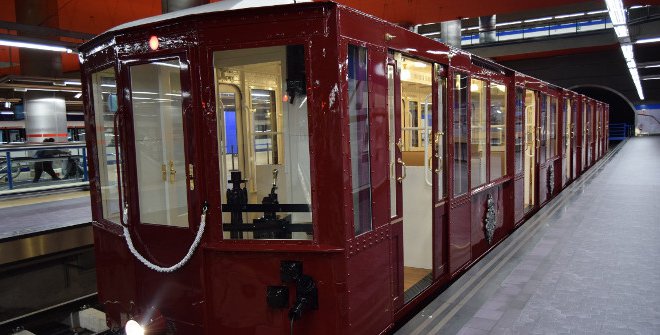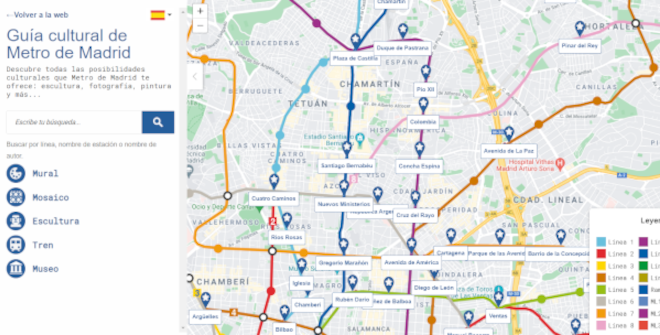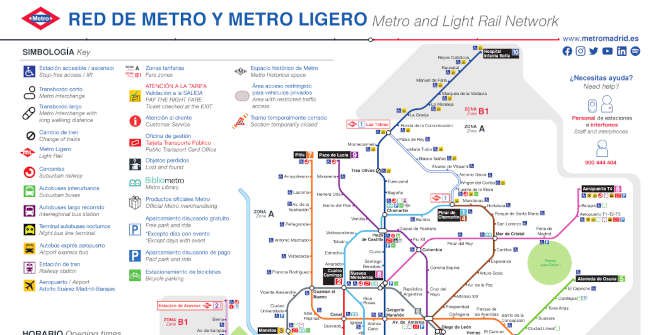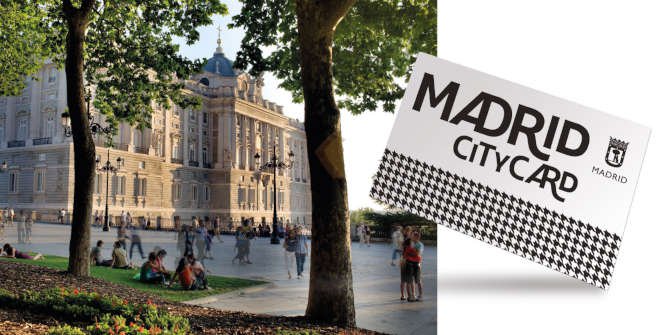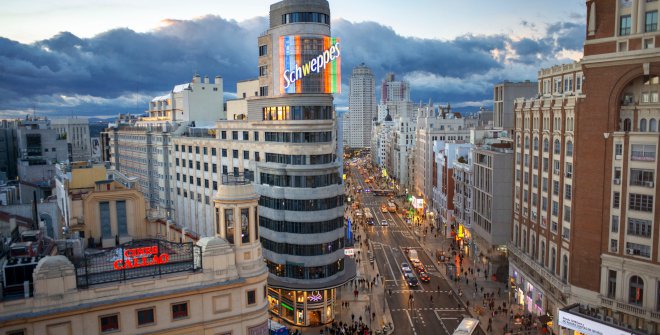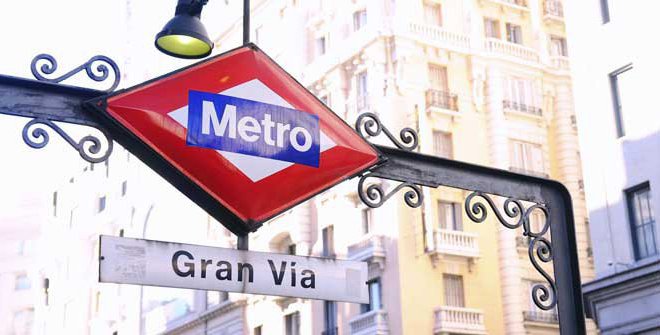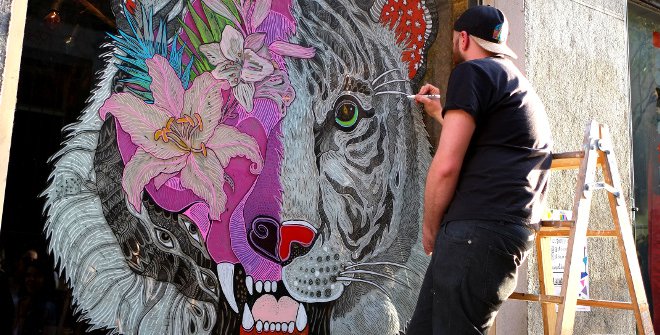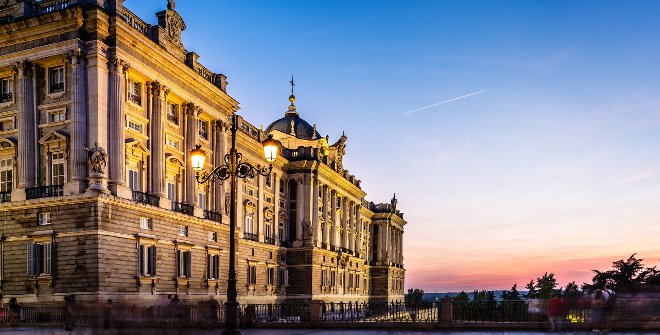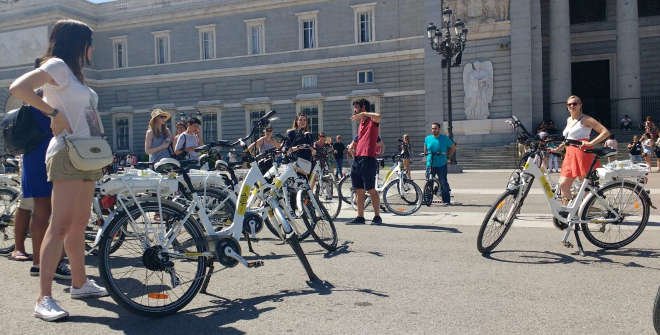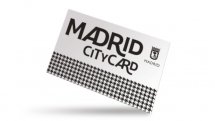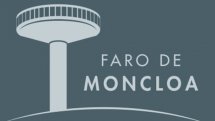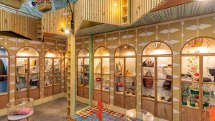Tourism on the Metro
More than 100 years have passed since King Alfonso XIII inaugurated the first section of the Madrid Metro. It was on 17 October 1919 and the Cuatro Caminos-Sol route was the first. A lot has happened since then. As the Metro has its own history and it hides many attractions, we have prepared a unique underground tourist route. What will you come across? Mosaics, ghosts, obsolete platforms, art, archaeological and paleontological remains… We are going to list some of them that you will love to discover.
A tribute to the nations at Feria de Madrid
The route can start at Feria de Madrid station (L8), called Campo de las Naciones until June 2017, which welcomes the traveller with a spectacular ceramic mural that extends the length of the platform. All of the colours, shapes and nations, from which it got its previous name, can be seen. Who is responsible for this mural? A team of artists led by Luis Sardá and Carlos Alonso. They wanted to call their work “Faces of the nations, a single flag”. It is a tribute to the people of the earth living together.
Ghosts at Tirso de Molina
Apparently, this station in the centre of Madrid preserves the remains of the Mercedarian monks who used to live in the former Merced convent, which was pulled down 150 years ago. At the beginning of the 20th century, when work began on the construction of the Metro de Tirso (L1) de Molina station, operators found the bones of those monks, and as nobody knew what to do with them, they were deposited on the platforms and covered in tiles. They have been there ever since as legend has it. The story has not been confirmed but experts in the history of Madrid believe that this was probably the case.
Caños del Peral Museum, in Ópera
It’s true. The Metro de Madrid hides an entire archaeological museum inside it. We are talking about the Caños del Peral Museum and it is in the Ópera station (L2, L5 and Ramal Norte). What can you see there? Part of the historical Caños del Peral Fountain, the Amaniel Aqueduct and the Arenal Sewer. They are all archaeological remains from the 16th and 17th centuries related to the supply of water to Madrid which were found in 2009 when carrying out improvements to the Ópera station. The museum is exactly 10 metres below the Plaza de Isabel II.
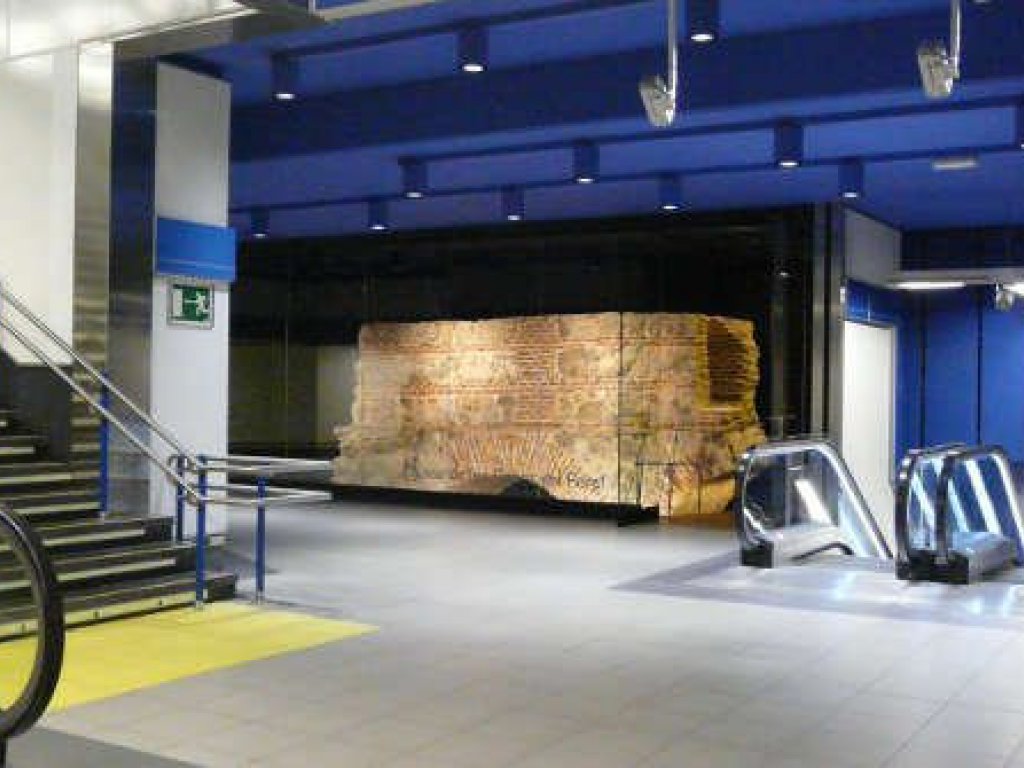
“Caprichos” and “Follies” in Goya
Walking along the platforms of Goya station (L4) is entering part of the work of one of the geniuses of Spanish painting. We are talking about Francisco de Goya (1746-1828). Here, the traveller can wander through the images painted by the artist, ranging from “The Caprichos” to “The Follies”, as well as “Bullfighting”. Strangely enough, some of the prints of “The Caprichos” are called: “They've already got a seat ”, “Rising and Falling” or “It’s Time”. Not intentionally. All of these images, whose originals can be found in the National Library, have been on display here since 1985, although the passage of time has forced some of them to be given a facelift.
Engine Hall, in Pacífico
Located at Number 49, Calle de Valderribas, alongside the Pacífico metro station (L6 and L1), this space was built between 1922 and 1923 to provide a better energy service to the Metro de Madrid and, since then it has kept its original appearance, in spite of being restored in 2008. It is an impressive building which is home to three gigantic diesel and other types of machinery that the Unión Eléctrica Madrileña company used to generate the power to operate the trains. In its day, it was the most important power company in Spain but became obsolete in the 1950s and was totally abandoned in 1972. Who is responsible for the building? Antonio Palacios, one of the great architects of Madrid.
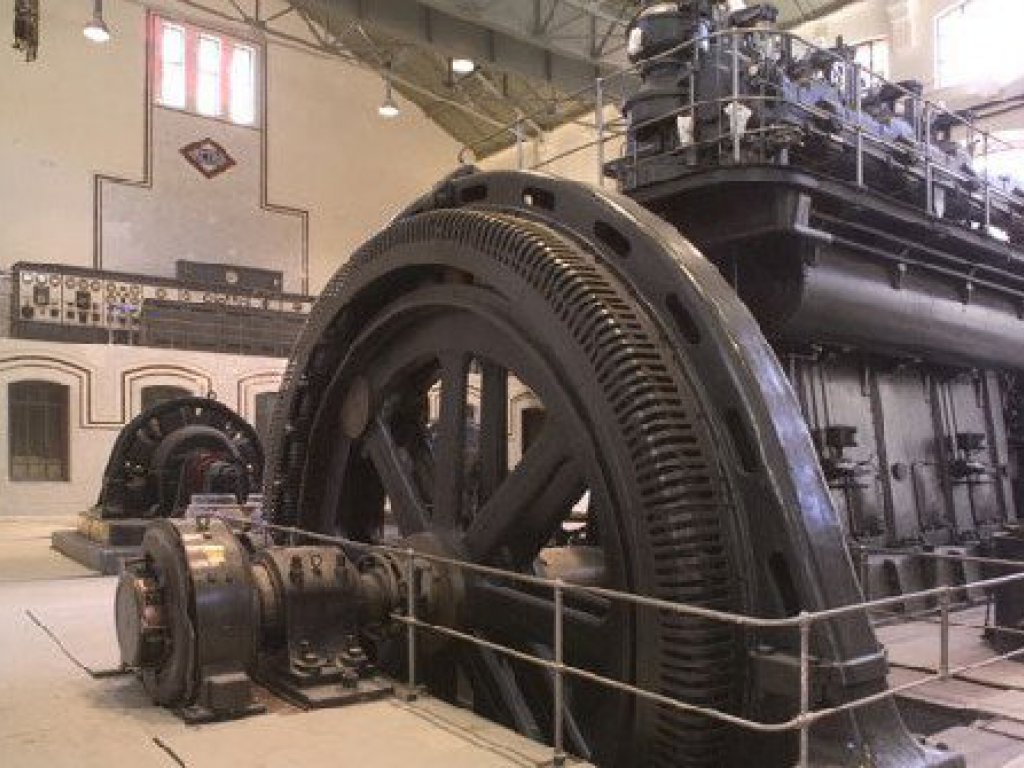
Prehistory, present in Carpetana
When the Carpetana station (L6) was being built, there was a massive surprise. A paleontological site of enormous interest came to light. Here, more than 15,000 remains of prehistoric animal fossils were found, some of which date back more than 14 million years. There were primitive horse jaws, remains of mastodons, giant turtles, rhinoceroses, etc. Today, there is a paleontological museum in this station in which the paleo-atmospheres are recreated in large display units. There is also a large screen printed comic panel which illustrates different aspects of the fauna that appeared in Carpetana. An impressive real-size mastodon has been recreated at one of the entrances to the station.
Chamberí, a journey in time
Chamberí station invites you to go back to the middle of the 20th century. It forms part of the first section of the Metro (Sol-Cuatro Caminos) which was opened to the public in 1919, but had to be closed when the trains increased in length and it was impossible to extend the platform. Since 1966, it has been totally closed until the company decided to condition it for the use and enjoyment of citizens. The ticket offices, platforms, billboards, turnstiles, etc. can be seen just the way they were. It is a journey back in time.
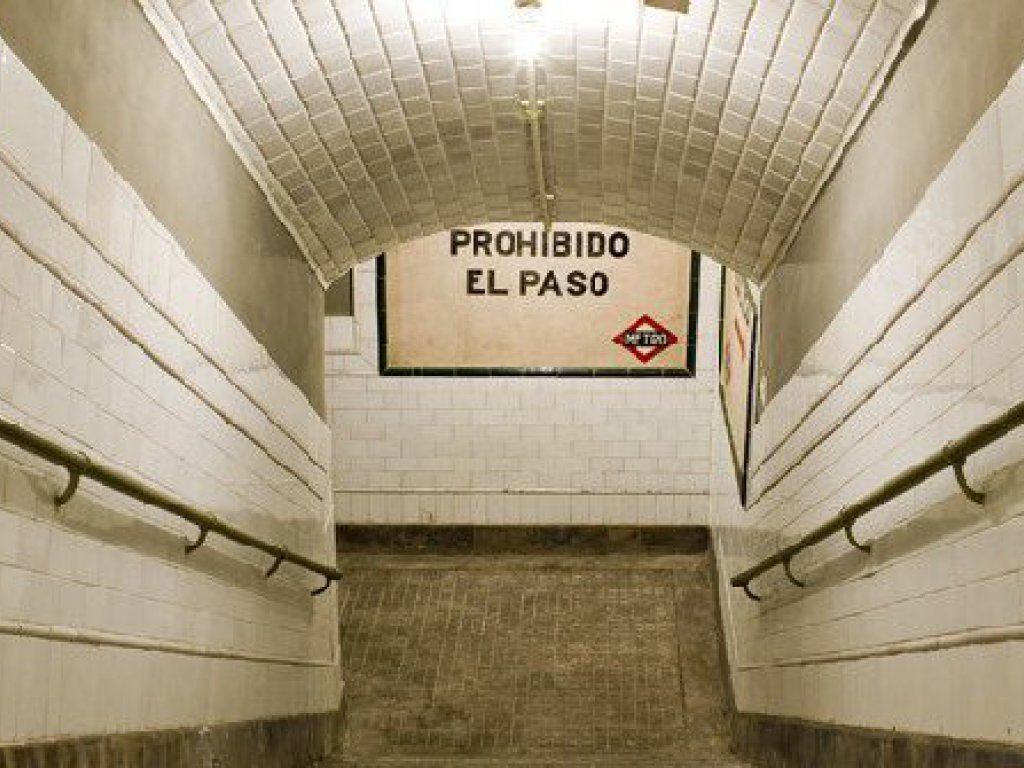
Paleontological remains in Príncipe Pío
Príncipe Pío station (L6) is home to remains dating back more than 15 million years, which were found in the remodelling works of the Príncipe Pío interchange, carried out between 2005 and 2007. No less than 3,000 paleontological remains were recorded. Experts say that Madrid was then an African savannah and rhinoceroses, giant turtles, mastodons, boars, deer, otters and weasels lived here, as well as a species similar to the red panda. Most of this paleontological treasure can be found in the National Museum of Natural Sciences, but some of them are here for the enjoyment of travellers, who can also contemplate replicas of fossilised skulls.
Historic Trains Exhibition
This exhibition in the Madrid - Chamartín - Clara Campoamor Station (L1, L10) and organised to mark the Centenary of the Metro, displays the trains that were used on the Metro a century ago. Those trains, consisting of eight carriages, are those that were initially used on the network , MR-6 and MR-9.
In addition to the trains, the main feature of the exhibition, it is also possible to contemplate around 100 elements that have been changing over time, such as a telephone used in the 1960s to communicate with the nearest station or the cap that formed part of the uniform of station and train staff until the beginning of the 1980s. A perfect place to snap an Instagram pic with the first Metro trains from a century ago.
Paco de Lucía station with its beautiful mural
The new Paco de Lucía station (L9) permanently includes a mural devoted to the Spanish flamenco guitarist and songwriter, by the urban artists, Okuda and Rosh333.
These artists have also displayed their works in cities like New York, Miami, Rio de Janeiro, Tokyo or Johannesburg.
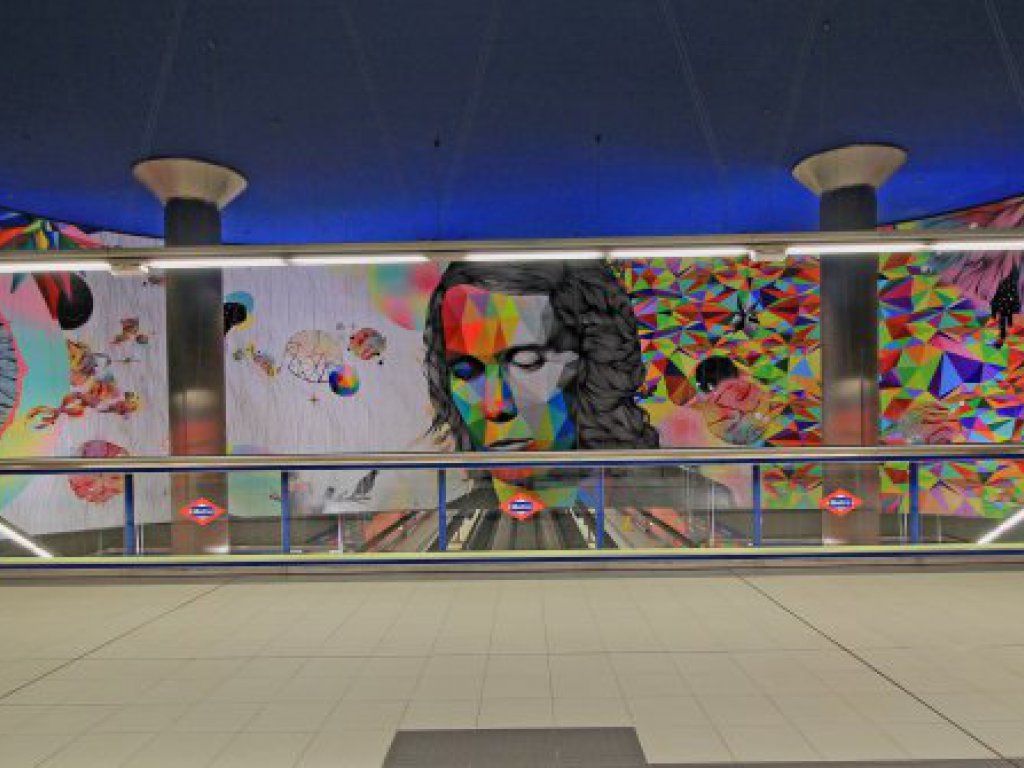
Colombia station and the curious yellow plane structure
The modern Colombia station (L8 and L9), located under Calle Príncipe de Vergara between the Plaza de la República Dominicana and the junction with Calle Colombia, is home to a curious yellow plane structure. It was one of the first large-scale decorative elements for a station, which was soon joined by many others.
Rubén Darío Metro, a tribute to Antonio Mingote
The Rubén Darío station (L5) pays tribute to the cartoonist, humorist, writer and academic Antonio Mingote. The platforms and corridors contain large vinyls containing a series of vignettes and illustrations related to this means of transport that come from the ABC Museum of Drawing and Illustration and the Antonio Mingote Foundation. The station chosen is the closest to the historic ABC newsroom in Calle de Serrano, where Mingote would publish from 1953 until his death in 2012.
Refurbishment of Gran Via station and new entrance
The Gran Via metro station has been refurbished in 2021 with a replica of the original entrance built by architect Antonio Palacios at the start of the 20th century, providing access to the first line of Madrid’s new metropolitan network, North – South. In Gran Via station, on the second intermediate level, there is also a small museum exhibiting the archaeological remains uncovered during the excavation and expansion of the station.
The advertising mural at Sevilla station
During the modernisation work carried out at Sevilla station, the remains of an old ceramic advertising mural were uncovered, which have been maintained for the enjoyment of visitors. An advert for Carabaña soaps dating back to the time when the station was built, in 1924, and which was gradually covered over with the passage of the time over the next almost 100 years of suburban life.
Atocha Station: the station of Art
Atocha is considered to be the station of Art as its corridors, platforms and foyers display 36 works from the leading museums in Madrid: the Prado Museum, the Reina Sofía Museum and the Thyssen-Bornemisza National Museum. By means of large format vinyls, you can discover and enjoy the work of some of the leading artists in history.

Tribute to the elderly at Plaza de Castilla Station
To pay tribute to the elderly, one of the groups most affected by Coronavirus (COVID-19), Metro de Madrid’s Plaza de Castilla station boasts a mural by the illustrator from Valencia, Paco Roca. The large format work of art reflects an everyday scene in a park, featuring the elderly alongside their children and grandchildren.
La Latina and its tribute to Lina Morgan
La Latina station, considered to be one of the most traditional stations, boasts a mural by the architect and artist, David Cárdenas which pays tribute to the actress, Lina Morgan under the title of Lina and La Latina. It has been built with 2,310 painted ceramic pieces in which locations related to episodes in the life of the artist stand out. She was closely linked to this neighbourhood where she was born and ran the Teatro La Latina.

Pioneering women in Manuela Malasaña
Manuela Malasaña station, on Line 12 (MetroSur), boasts illustrated portraits and biographical sketches of 18 of the most important women in history in different fields, ranging from literature and science to the struggle for Human Rights.
